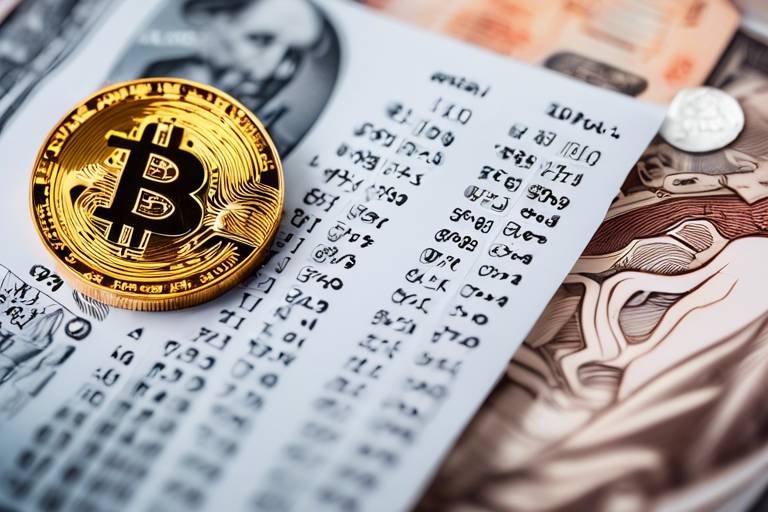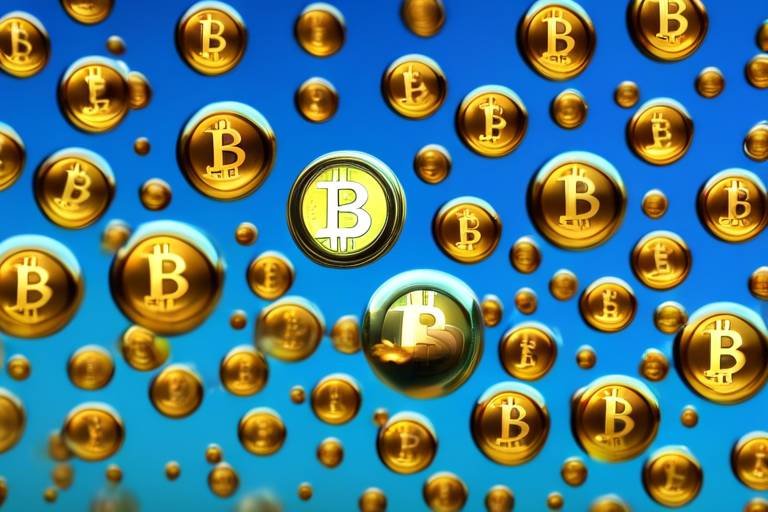Market Analysis - The Impact of Peer-to-Peer Trading
In recent years, peer-to-peer trading has emerged as a game-changer in the world of commerce. This innovative approach allows individuals to engage directly in the exchange of goods and services, effectively bypassing traditional intermediaries like retailers and brokers. Imagine a marketplace where you can buy a vintage guitar directly from its previous owner without paying hefty fees to a middleman. Sounds appealing, right? This article explores how peer-to-peer trading is transforming market dynamics, reshaping consumer behavior, and influencing the overall economy.
At its core, peer-to-peer trading is about decentralization. It leverages technology to create a direct connection between buyers and sellers, fostering a sense of community and trust. With the rise of platforms designed specifically for these transactions, anyone with a smartphone can participate in a global marketplace. This shift not only empowers consumers but also encourages small businesses and independent sellers to thrive in a competitive landscape.
But what exactly does this mean for the economy? Well, it signifies a move towards more efficient resource allocation. Traditional markets often suffer from inefficiencies caused by middlemen who inflate prices and limit choices. In contrast, peer-to-peer trading enhances market access, allowing individuals to find exactly what they're looking for without the hassle of navigating through layers of intermediaries. This democratization of commerce is not just a trend; it's a significant shift that could redefine how we think about buying and selling.
Moreover, as peer-to-peer trading continues to grow, it raises intriguing questions about the future of traditional marketplaces. Will we see a complete overhaul of how we shop, or will these systems coexist? One thing is certain: the impact of peer-to-peer trading is profound, and understanding its implications is crucial for anyone interested in the future of commerce.
- What is peer-to-peer trading? - Peer-to-peer trading refers to the direct exchange of goods or services between individuals without intermediaries.
- How does peer-to-peer trading benefit consumers? - It offers cost savings, increased access to markets, and more choices for consumers.
- Are there risks associated with peer-to-peer trading? - Yes, there are challenges such as regulatory concerns and trust issues that need to be addressed.
- What role does technology play in peer-to-peer trading? - Technology enables seamless transactions and enhances security, making trading more accessible.
- What does the future hold for peer-to-peer trading? - Experts predict growth and greater integration with traditional markets, leading to hybrid trading models.
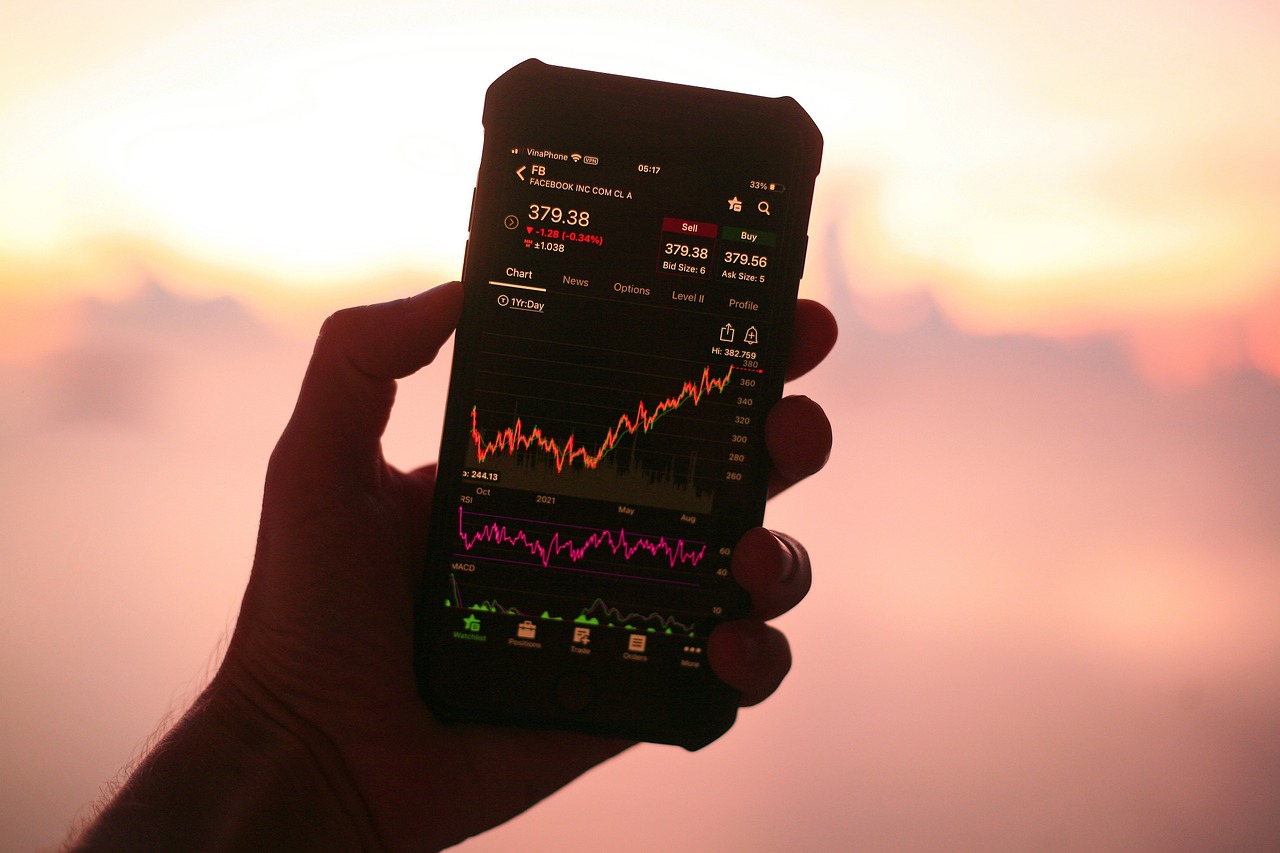
Understanding Peer-to-Peer Trading
Peer-to-peer trading, often abbreviated as P2P trading, is a revolutionary concept that has reshaped the way we think about transactions. At its core, it involves the direct exchange of goods or services between individuals without the need for traditional intermediaries, such as banks or brokers. Imagine a bustling marketplace where buyers and sellers connect directly, exchanging their wares and services in a seamless manner. This approach not only fosters a sense of community but also enhances the efficiency of transactions, making it a compelling option for many.
The mechanisms that enable peer-to-peer trading are largely driven by technology, particularly through online platforms and mobile applications. These platforms serve as facilitators, providing users with the tools they need to connect, negotiate, and complete transactions securely. Think of these platforms as modern-day marketplaces, where the barriers that once existed between buyers and sellers are significantly lowered. This democratization of trade allows individuals from diverse backgrounds to participate in markets that were previously out of reach.
Furthermore, the technology underpinning peer-to-peer trading is continually evolving. For instance, the emergence of blockchain technology has revolutionized the way transactions are recorded and verified. With an immutable ledger, users can engage in trades with confidence, knowing that their transactions are secure and transparent. This is akin to having a trusted friend vouch for you in a business deal, providing an added layer of assurance.
In addition to blockchain, mobile applications have played a pivotal role in making peer-to-peer trading accessible to a broader audience. Users can now engage in transactions anytime and anywhere, turning their smartphones into powerful trading tools. This convenience has led to an explosion of P2P platforms, catering to various markets, from real estate to digital currencies.
To summarize, peer-to-peer trading represents a significant shift in how we conduct transactions. By leveraging technology, it eliminates intermediaries, enhances market accessibility, and fosters a more inclusive trading environment. As we delve deeper into the benefits and challenges of this trading model, it's essential to grasp its foundational principles to fully appreciate its impact on the economy and consumer behavior.
- What is peer-to-peer trading? - Peer-to-peer trading is the direct exchange of goods or services between individuals without intermediaries.
- How does technology facilitate peer-to-peer trading? - Platforms and mobile applications connect buyers and sellers, enabling secure and efficient transactions.
- What are the benefits of peer-to-peer trading? - Benefits include cost savings, increased market access, and enhanced consumer choice.
- Are there risks associated with peer-to-peer trading? - Yes, challenges include regulatory concerns, trust issues, and market volatility.

Benefits of Peer-to-Peer Trading
Peer-to-peer trading is not just a buzzword; it's a game-changer in the marketplace. Imagine a world where you can buy or sell directly with someone else without the hassle of middlemen. This concept is not only revolutionary but also brings a plethora of benefits that can significantly enhance the trading experience for participants. Let’s dive into some of the most compelling advantages that make peer-to-peer trading an attractive option for many.
One of the standout advantages of peer-to-peer trading is its cost efficiency. By cutting out the middlemen, participants can save on various fees associated with traditional trading platforms. Think about it: when you buy a product from a retailer, there are often hidden costs that inflate the price. In a peer-to-peer setting, these costs are minimized, leading to more competitive pricing. This is not just beneficial for buyers; sellers also enjoy greater margins, which can be reinvested into their businesses or passed on to consumers as lower prices.
Peer-to-peer platforms typically charge lower transaction fees compared to traditional marketplaces. For example, while a conventional online marketplace might take a 10% cut of each sale, many peer-to-peer platforms operate on a much smaller fee structure, often around 2-5%. This reduction in fees can be a significant incentive for both buyers and sellers, making each transaction more rewarding.
With reduced overhead costs, sellers in peer-to-peer markets can adopt competitive pricing strategies. This means they can offer better deals that attract more buyers. Picture a farmer who sells directly to consumers instead of going through a grocery store. Not only can the farmer offer fresher produce, but they can also sell it at a price that’s lower than what consumers would find in stores, all while earning a fair profit.
Peer-to-peer trading platforms democratize access to markets that were previously out of reach for many individuals or groups. For instance, someone living in a remote area might find it challenging to access traditional marketplaces. However, with peer-to-peer trading, they can connect with buyers and sellers from all over the world. This increased accessibility fosters inclusivity and opens up new opportunities for those who may have been sidelined by conventional systems.
Furthermore, peer-to-peer trading can support niche markets that traditional platforms might overlook. Whether it's handmade crafts or unique collectibles, these platforms allow sellers to reach audiences that are genuinely interested in their products. This kind of market expansion not only benefits sellers but also enriches consumer choice, giving buyers more options than ever before.
Speaking of choice, peer-to-peer trading significantly enhances consumer options. Unlike traditional marketplaces that may have limited selections due to inventory constraints, peer-to-peer platforms are like bustling bazaars filled with a diverse array of products. Consumers can explore various offerings, compare prices, and make informed decisions tailored to their preferences.
In essence, peer-to-peer trading is not just about buying and selling; it's about creating a vibrant community where participants can engage, share, and thrive. It's a marketplace driven by trust and transparency, where users can feel confident in their transactions. As this model continues to grow, it will undoubtedly reshape the way we think about commerce and consumer interactions.
- What is peer-to-peer trading?
Peer-to-peer trading refers to the direct exchange of goods or services between individuals without intermediaries.
- What are the main benefits of peer-to-peer trading?
Benefits include cost efficiency, reduced transaction fees, increased market accessibility, and enhanced consumer choice.
- How does technology facilitate peer-to-peer trading?
Technology, particularly blockchain and mobile applications, enhances security, transparency, and accessibility in peer-to-peer trading.
- Are there risks associated with peer-to-peer trading?
Yes, risks include regulatory concerns, trust issues, and market volatility.

Cost Efficiency
One of the primary benefits of peer-to-peer trading is its remarkable . In a world where every penny counts, the ability to save money while engaging in transactions is a game changer. By eliminating traditional intermediaries—think of them as the middlemen who often take a hefty cut from transactions—participants can enjoy significant savings. This is akin to cutting out the middleman when buying a car; you often end up with a better deal when you negotiate directly with the seller.
When we look at the mechanics of peer-to-peer trading, the absence of intermediaries translates to lower transaction fees. For instance, many peer-to-peer platforms charge fees that are a fraction of what traditional marketplaces demand. Here’s a quick comparison to illustrate this point:
| Trading Method | Typical Transaction Fee |
|---|---|
| Traditional Marketplace | 5-15% |
| Peer-to-Peer Platform | 1-5% |
As you can see, the difference is striking. These reduced fees not only benefit buyers but also sellers, who can pass on these savings to their customers. This leads to a more competitive pricing environment, where sellers are encouraged to adopt pricing strategies that attract buyers. Imagine walking into a store where every item is priced fairly, without the added costs that come from middlemen—this is the reality that peer-to-peer trading aims to create.
Furthermore, the potential for competitive pricing strategies is amplified in peer-to-peer markets. Sellers, free from the burden of high overhead costs associated with traditional retail, can afford to lower their prices. This not only attracts more buyers but also fosters a dynamic trading environment where prices are continually adjusted based on supply and demand. In essence, peer-to-peer trading can be likened to a vibrant marketplace where everyone is vying for the best deal, ensuring that consumers always get value for their money.
In conclusion, the cost efficiency of peer-to-peer trading is not just a benefit; it is a revolutionary shift in the way we think about buying and selling. By leveraging technology and cutting out the middlemen, both buyers and sellers can enjoy a more rewarding trading experience. So, whether you're looking to sell your old bike or buy a new gadget, peer-to-peer platforms offer an opportunity to save money and make smarter choices.

Reduced Transaction Fees
One of the most enticing aspects of peer-to-peer (P2P) trading is the that participants enjoy. In traditional marketplaces, every transaction typically incurs a range of fees imposed by intermediaries. These can include listing fees, commission rates, and even hidden charges that chip away at the final price. In contrast, P2P platforms often operate with a streamlined fee structure, drastically lowering the costs associated with buying and selling goods or services.
For example, consider a typical scenario in a traditional marketplace where a seller lists a product for $100. After factoring in a 10% commission fee, the seller only receives $90, while the buyer pays the full $100. In a P2P system, where transaction fees can be as low as 1-3%, the seller retains a more substantial portion of the sale—up to $97 or more. This difference can significantly impact both sellers and buyers, creating a win-win situation.
| Marketplace Type | Average Transaction Fee | Seller Receives on $100 Sale |
|---|---|---|
| Traditional Marketplace | 10% | $90 |
| Peer-to-Peer Marketplace | 1-3% | $97-$99 |
This significant reduction in transaction fees not only benefits sellers but also leads to more competitive pricing for buyers. With sellers able to keep more of their earnings, they can afford to lower their prices, which attracts more customers. This dynamic creates a more vibrant marketplace where prices are driven by supply and demand rather than inflated by intermediary fees. As a result, consumers are more likely to find better deals and a wider range of products available at competitive prices.
Moreover, the lower transaction fees contribute to the overall efficiency of the trading process. Sellers can quickly adjust their pricing strategies based on market conditions, while buyers can take advantage of real-time deals without the burden of excessive fees. This fluidity fosters a more responsive market environment, where participants can engage in transactions with confidence, knowing that they are not being penalized by exorbitant fees.
In conclusion, the associated with peer-to-peer trading are a game changer, making it an attractive option for both buyers and sellers. As the P2P trading landscape continues to grow, we can expect these benefits to become even more pronounced, further enhancing the appeal of direct exchanges in various markets.
- What are peer-to-peer trading platforms? Peer-to-peer trading platforms are online marketplaces that facilitate direct transactions between individuals without the need for intermediaries.
- How do reduced transaction fees benefit consumers? Lower transaction fees allow consumers to enjoy better pricing and access to a wider range of products.
- Are there risks associated with peer-to-peer trading? Yes, risks include regulatory issues and trust concerns, which are important to consider when engaging in P2P transactions.
- What technology supports peer-to-peer trading? Technologies such as blockchain and mobile applications play a crucial role in enhancing the security and accessibility of P2P trading.
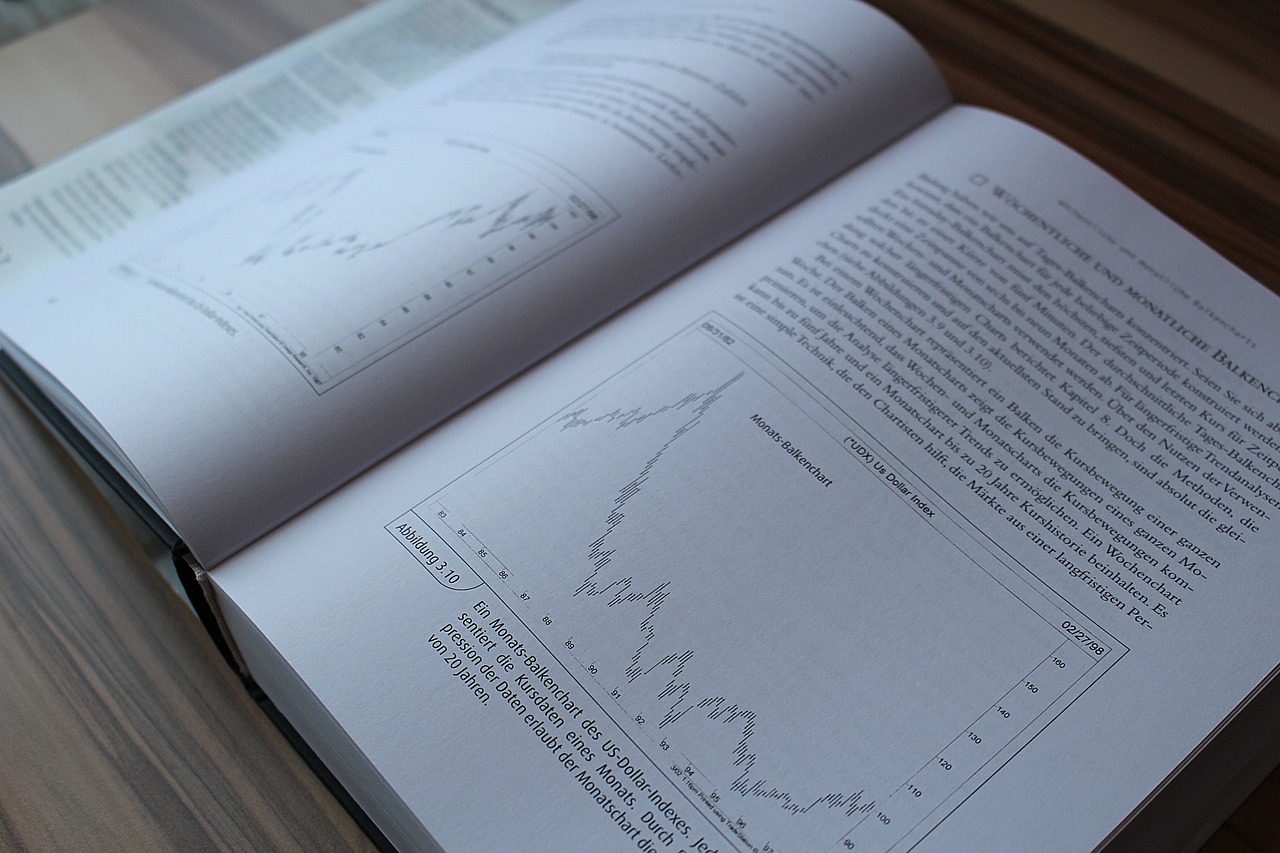
Competitive Pricing Strategies
In the realm of peer-to-peer trading, play a pivotal role in attracting both buyers and sellers. By cutting out the middleman, participants can enjoy a more flexible pricing structure that reflects the true value of goods and services. This flexibility allows sellers to set prices that are not only competitive but also appealing to a broader audience.
One significant aspect of competitive pricing in peer-to-peer markets is the ability to adjust prices dynamically based on real-time demand and supply. Unlike traditional markets, where prices may be rigid and influenced by various external factors, peer-to-peer platforms enable sellers to respond swiftly to market conditions. For instance, if a seller notices an uptick in demand for a specific item, they can increase the price slightly to maximize profits. Conversely, if competition heats up, they can lower their prices to attract more buyers.
Moreover, the transparency of peer-to-peer trading encourages sellers to adopt value-based pricing. This means that instead of just competing on price, sellers can highlight the unique benefits of their offerings. For example, a seller might emphasize the quality, craftsmanship, or sustainability of their product, justifying a higher price point. This strategy not only differentiates their goods but also builds a loyal customer base that values what they offer.
To further illustrate the impact of competitive pricing strategies, consider the following table comparing traditional marketplace pricing with peer-to-peer pricing:
| Aspect | Traditional Marketplace | Peer-to-Peer Marketplace |
|---|---|---|
| Pricing Flexibility | Rigid, set by intermediaries | Dynamic, responsive to market changes |
| Transaction Fees | High fees reduce seller margins | Lower fees increase profitability |
| Consumer Choice | Limited options due to intermediaries | Wide variety directly from sellers |
| Market Reach | Geographically constrained | Global access for buyers and sellers |
As this table demonstrates, peer-to-peer trading not only enhances pricing strategies but also empowers sellers to create a more personalized shopping experience. By leveraging their unique selling points and understanding market dynamics, sellers can forge stronger connections with consumers, leading to repeat business and word-of-mouth referrals.
In summary, the competitive pricing strategies in peer-to-peer trading are not merely about lowering prices; they encompass a holistic approach to understanding consumer needs, market trends, and product value. This adaptability is what makes peer-to-peer trading an exciting and viable alternative to traditional marketplaces.
- What is peer-to-peer trading? Peer-to-peer trading refers to the direct exchange of goods or services between individuals without intermediaries.
- How does peer-to-peer trading save costs? By eliminating intermediaries, participants can avoid high transaction fees, leading to more competitive pricing.
- What are the risks associated with peer-to-peer trading? Risks include regulatory issues, trust concerns, and market volatility, which can affect the trading experience.
- How does technology facilitate peer-to-peer trading? Technologies like blockchain and mobile applications enhance security, transparency, and accessibility in peer-to-peer transactions.
- What does the future hold for peer-to-peer trading? Experts predict continued growth and potential integration with traditional markets, creating hybrid models that benefit consumers and businesses.
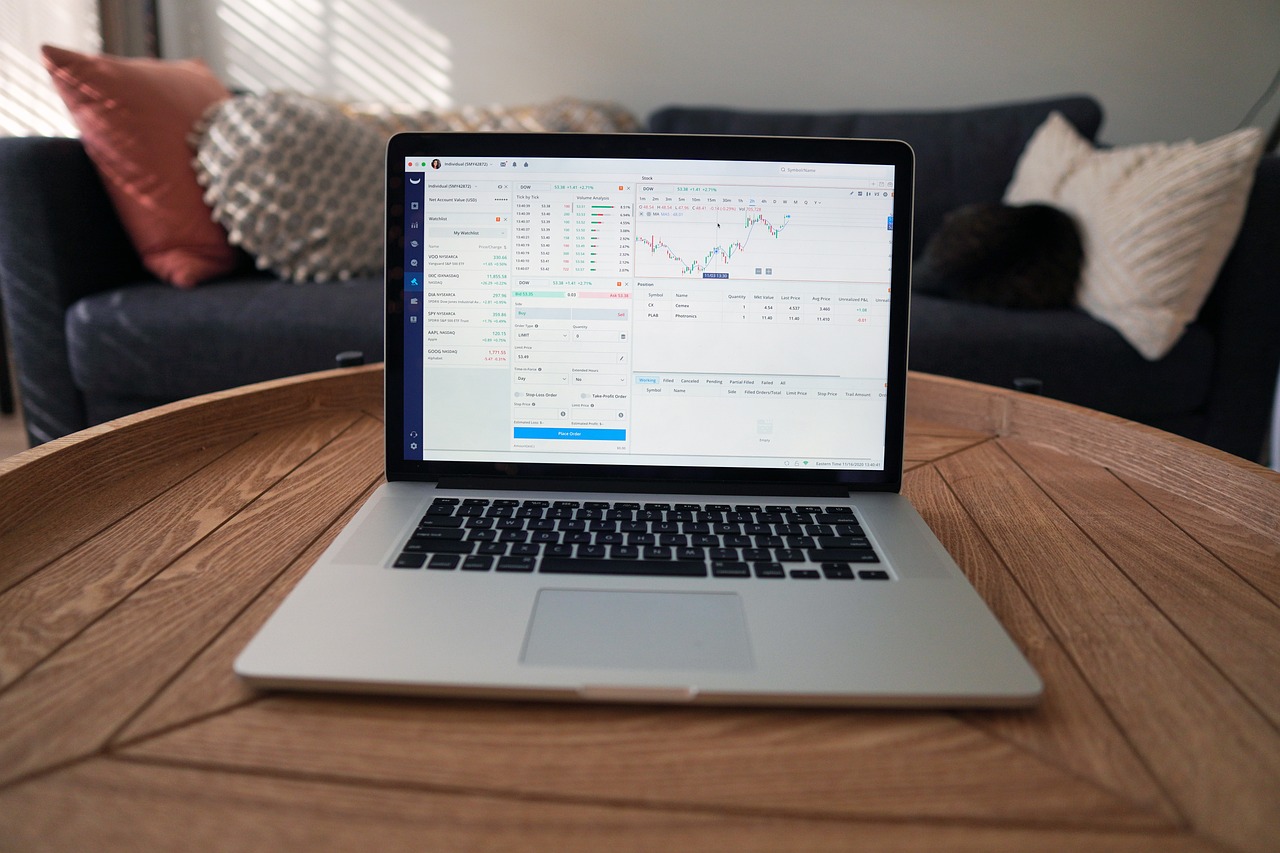
Increased Market Accessibility
Peer-to-peer trading has revolutionized the way individuals access markets, breaking down barriers that once seemed insurmountable. Imagine a world where anyone, regardless of their geographical location or financial status, can participate in a vibrant marketplace. This is the essence of increased market accessibility brought about by peer-to-peer platforms. By leveraging the power of technology, these platforms enable users to connect directly, fostering an environment where opportunities abound.
One of the most significant impacts of peer-to-peer trading is its ability to democratize access to various goods and services. Traditionally, many individuals were limited by their location or the availability of local markets. Now, with just a smartphone and an internet connection, anyone can engage in trading activities, whether they are selling handmade crafts, offering services, or trading digital assets. This shift not only enhances consumer choice but also empowers individuals to become active participants in the economy.
Furthermore, peer-to-peer trading platforms often cater to niche markets that may not have been viable for traditional retailers. For example, consider a local artisan who creates unique jewelry. In a conventional retail setup, this artisan might struggle to reach a broader audience due to high overhead costs and limited marketing reach. However, through a peer-to-peer platform, they can showcase their products to a global audience, directly connecting with potential buyers who appreciate their craftsmanship. This not only boosts the artisan's visibility but also enriches the marketplace with diverse offerings.
Additionally, peer-to-peer trading can significantly reduce the barriers to entry for new businesses. Entrepreneurs can start small, testing their products or services without the hefty investment typically required in traditional business models. This flexibility encourages innovation and creativity, allowing individuals to experiment with their ideas in a low-risk environment. As a result, we see a flourishing of small businesses and startups, each contributing to the overall economy.
To illustrate the impact of peer-to-peer trading on market accessibility, consider the following table:
| Aspect | Traditional Market | Peer-to-Peer Market |
|---|---|---|
| Geographical Reach | Limited to local customers | Global customer base |
| Entry Barriers | High (capital, inventory) | Low (minimal investment) |
| Product Diversity | Standardized offerings | Diverse, unique products |
| Consumer Choice | Limited options | Vast selection |
As we can see, the differences are profound. Peer-to-peer trading not only enhances market accessibility but also enriches the consumer experience by providing a wider array of choices and fostering a more inclusive economy. The ripple effect of this increased accessibility can lead to greater economic participation, ultimately benefiting society as a whole.
In conclusion, the rise of peer-to-peer trading platforms has opened doors that were previously closed to many. By enabling direct connections between buyers and sellers, these platforms create a more accessible marketplace that empowers individuals and encourages innovation. As we move forward, embracing this new trading paradigm can lead to a more equitable and dynamic economic landscape.
- What is peer-to-peer trading? Peer-to-peer trading refers to the direct exchange of goods or services between individuals without the involvement of intermediaries.
- How does peer-to-peer trading increase market accessibility? It allows individuals from various backgrounds to participate in the market, breaking down geographical and financial barriers.
- What are the benefits of using peer-to-peer platforms? Benefits include reduced transaction fees, increased consumer choice, and the ability for small businesses to thrive.
- What challenges do peer-to-peer trading platforms face? Challenges include regulatory concerns, trust issues, and market volatility.

Challenges of Peer-to-Peer Trading
While peer-to-peer trading has revolutionized the way we exchange goods and services, it is not without its challenges. As exciting as it may be to engage directly with other consumers, there are several hurdles that participants must navigate to ensure a smooth trading experience. One of the most pressing issues is the regulatory landscape. Since these platforms often operate outside traditional financial systems, the lack of clear regulations can lead to legal uncertainties. This ambiguity can make users wary, as they might question the legitimacy of transactions and the protections available to them.
Moreover, trust and security are paramount in any trading environment, and peer-to-peer platforms are no exception. Unlike established marketplaces that have built-in customer service and fraud protection, peer-to-peer trading relies heavily on the integrity of its users. This raises concerns about potential scams and the security of personal information. To combat this, many platforms are implementing robust security measures, such as identity verification and rating systems, but these solutions are not foolproof.
Another challenge is market volatility. Prices in peer-to-peer trading can fluctuate significantly, influenced by supply and demand dynamics that are often unpredictable. This unpredictability can deter potential participants who may feel more comfortable in stable, traditional marketplaces. To illustrate this point, consider the following table that summarizes the key challenges faced in peer-to-peer trading:
| Challenge | Description |
|---|---|
| Regulatory Concerns | Lack of clear guidelines can lead to legal uncertainties. |
| Trust and Security Issues | Users may be hesitant due to the potential for scams and identity theft. |
| Market Volatility | Prices can fluctuate wildly, making trading unpredictable. |
Addressing these challenges is crucial for the sustainability and growth of peer-to-peer trading. As the market matures, stakeholders—including platform operators, users, and regulators—must work together to create a safer and more reliable trading environment. This collaboration could involve developing clear regulations that protect users while still fostering innovation. Additionally, enhancing security measures and building trust among participants will be essential in encouraging broader adoption of peer-to-peer trading.
In conclusion, while the challenges of peer-to-peer trading are significant, they are not insurmountable. With the right strategies and collaborative efforts, the peer-to-peer trading landscape can evolve into a secure and thriving marketplace that benefits all participants.
- What is peer-to-peer trading? Peer-to-peer trading refers to the direct exchange of goods or services between individuals without the involvement of traditional intermediaries.
- What are the main benefits of peer-to-peer trading? The primary benefits include cost efficiency, increased market accessibility, and enhanced consumer choice.
- What challenges does peer-to-peer trading face? Key challenges include regulatory concerns, trust and security issues, and market volatility.
- How can trust be established in peer-to-peer trading? Trust can be built through secure transactions, user ratings, and robust identity verification processes.
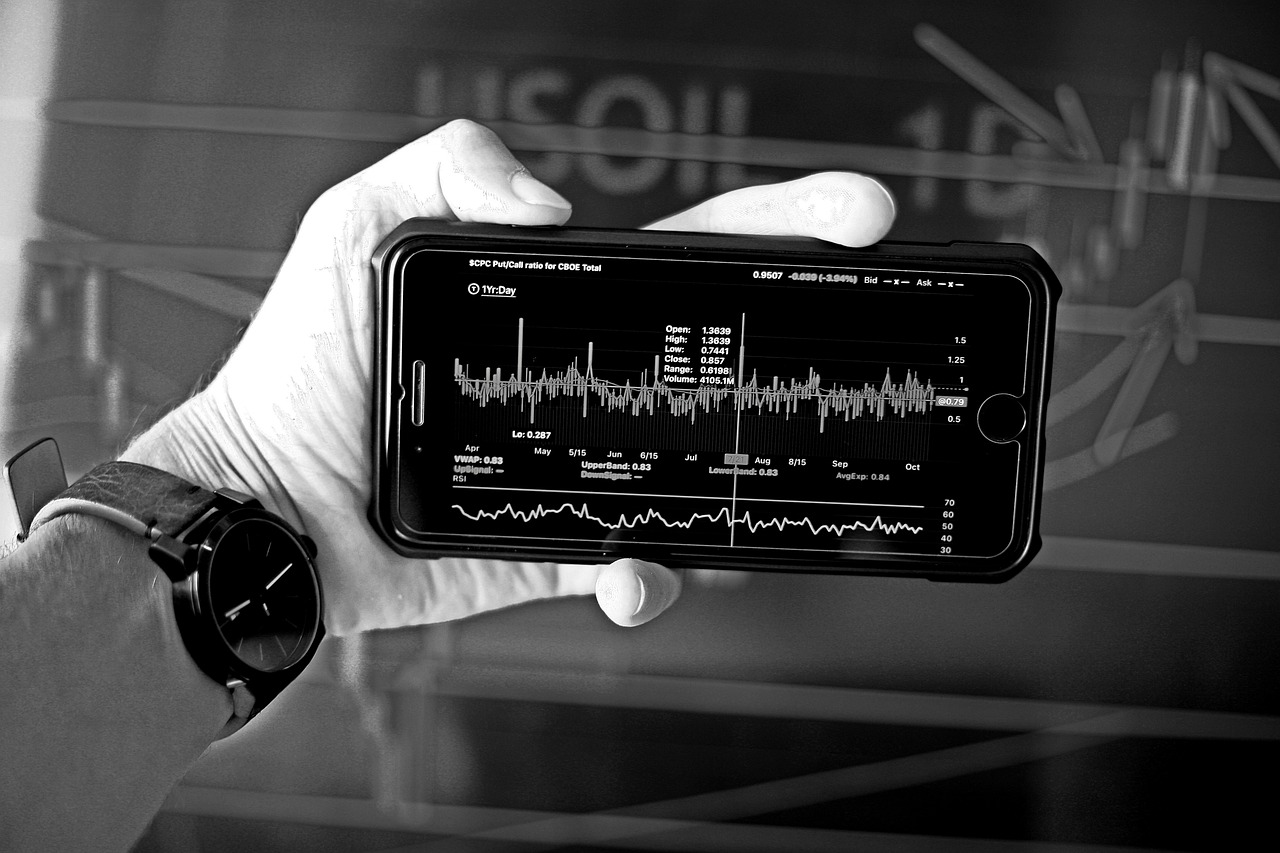
Regulatory Concerns
In the rapidly evolving landscape of peer-to-peer (P2P) trading, one of the most pressing issues that participants face is the regulatory environment. Unlike traditional markets, which are often governed by a robust framework of laws and regulations, P2P trading operates in a gray area where legal guidelines are often ambiguous or nonexistent. This lack of regulation can lead to significant legal uncertainties for both buyers and sellers, making the trading experience fraught with potential risks.
For instance, without clear regulations, participants may find themselves vulnerable to fraud or scams. Imagine purchasing a high-value item from an unknown seller, only to discover that the item is counterfeit or never delivered. Such scenarios not only undermine trust in P2P platforms but can also deter new users from engaging in these markets. To illustrate the impact of regulatory gaps, consider the following table:
| Regulatory Aspect | Potential Impact |
|---|---|
| Lack of Consumer Protection | Increased risk of fraud and scams |
| Ambiguous Tax Regulations | Confusion over tax liabilities for participants |
| Inconsistent Standards | Varied quality and reliability of transactions |
To address these concerns, it is essential for regulatory bodies to step in and establish clear guidelines that can protect participants while still fostering innovation. This could involve creating frameworks that define the responsibilities of P2P platforms, set standards for transaction security, and outline consumer rights. A balanced regulatory approach can help mitigate risks while promoting a healthy trading environment.
Moreover, the conversation around regulation needs to consider the global nature of P2P trading. As these platforms often operate across borders, it becomes increasingly complex to enforce local regulations. This situation raises the question: should there be a standardized international framework for P2P trading? Such a framework could help harmonize regulations and provide a safer trading environment for users worldwide.
In conclusion, while the benefits of peer-to-peer trading are significant, the regulatory concerns cannot be overlooked. Establishing a clear and comprehensive regulatory framework is crucial for the long-term sustainability and growth of P2P trading markets. Only then can we expect to see a thriving ecosystem where participants can trade with confidence and security.
- What are the main regulatory concerns in peer-to-peer trading? Regulatory concerns primarily revolve around consumer protection, fraud prevention, and tax implications.
- How can regulations improve peer-to-peer trading? Regulations can enhance trust, provide standards for security, and clarify the rights and responsibilities of users.
- Is there a global regulatory framework for peer-to-peer trading? Currently, there is no standardized international framework, leading to inconsistencies in regulations across different regions.

Trust and Security Issues
In the world of peer-to-peer trading, trust is not just a nice-to-have; it’s a fundamental requirement. When individuals engage in direct transactions, they often do so without the safety net provided by traditional intermediaries like banks or established marketplaces. This absence of oversight can lead to a myriad of security concerns that both buyers and sellers must navigate. So, what are the primary trust and security issues that arise in peer-to-peer trading?
First and foremost, the risk of fraud is a significant concern. Without a third party to validate transactions, there is a higher likelihood of encountering dishonest participants. For instance, a seller might not deliver the promised goods, or a buyer might attempt to make a payment with counterfeit currency. To combat these risks, many peer-to-peer platforms are implementing robust verification processes. These can include:
- Identity Verification: Requiring users to verify their identity through government-issued IDs or other means.
- Transaction Tracking: Utilizing technology to monitor transactions for suspicious activity.
- Feedback Systems: Allowing users to rate and review each other, creating a reputation system that encourages honesty.
Another layer of trust comes from the security measures implemented by trading platforms. These measures are essential not only for protecting users’ personal and financial information but also for fostering confidence in the platform itself. For example, many platforms utilize encryption technology to safeguard sensitive data during transactions. This means that even if a malicious actor attempts to intercept data, they would find it nearly impossible to decipher.
Moreover, escrow services have emerged as a popular solution to enhance trust in peer-to-peer trading. In an escrow arrangement, a trusted third party holds the funds until both the buyer and seller fulfill their obligations. This creates a safety net, ensuring that both parties are protected. If the seller fails to deliver the goods, the funds are returned to the buyer, which significantly reduces the risk of fraud.
However, despite these advancements, the decentralized nature of peer-to-peer trading means that users must still exercise caution. It’s crucial for participants to conduct due diligence before engaging in any transaction. This might include researching the other party’s reputation, reading reviews, and even starting with smaller transactions to build trust gradually.
In conclusion, while peer-to-peer trading opens up exciting opportunities for direct exchanges, it also presents unique challenges regarding trust and security. By staying informed and utilizing the available protective measures, participants can navigate these challenges effectively, ensuring a safer trading experience. As the landscape evolves, ongoing discussions about best practices for security will be essential to foster a trustworthy environment for all users.
- What is peer-to-peer trading? Peer-to-peer trading refers to the direct exchange of goods or services between individuals, bypassing traditional intermediaries.
- How can I ensure my transactions are secure? Utilize platforms that offer identity verification, transaction tracking, and escrow services to enhance security.
- What should I do if I encounter fraud? Report the incident to the trading platform and consider taking legal action if necessary.
- Are there any risks associated with peer-to-peer trading? Yes, risks include fraud, lack of regulation, and trust issues, which can be mitigated by thorough research and using secure platforms.

The Role of Technology in Peer-to-Peer Trading
Technology serves as the backbone of peer-to-peer trading, enabling seamless transactions, secure communications, and efficient marketplace operations. At its core, the evolution of peer-to-peer trading is driven by advancements in technology that not only simplify the trading process but also enhance the overall user experience. Imagine being able to buy or sell goods without the hassle of traditional intermediaries—this is the magic that technology brings to the table.
One of the most significant innovations in this space is blockchain technology. It enhances transparency and security in peer-to-peer trading by providing an immutable ledger of transactions. This means that once a transaction is recorded, it cannot be altered or deleted, which significantly reduces the risk of fraud. Users can engage in transactions with confidence, knowing that their exchanges are secure and verifiable. For instance, consider a scenario where you want to purchase a vintage guitar from a seller across the country. With blockchain, both parties can see the transaction history, ensuring that the seller is legitimate and that the item is as described.
Furthermore, the rise of mobile applications has made peer-to-peer trading more accessible than ever. Imagine being able to browse, buy, or sell items right from your smartphone, anytime and anywhere. This level of convenience has transformed the trading landscape, promoting a more active trading environment. With just a few taps on your screen, you can connect with potential buyers or sellers, making the entire process feel as easy as sending a text message.
In addition to blockchain and mobile technology, artificial intelligence (AI) is also playing a pivotal role in enhancing peer-to-peer trading platforms. AI algorithms can analyze user behavior, predict market trends, and even provide personalized recommendations. This means that whether you’re a seasoned trader or a novice, the platform can cater to your specific needs, making trading not only easier but also more tailored to individual preferences.
Moreover, these technological advancements have led to the emergence of decentralized finance (DeFi) platforms. DeFi allows users to engage in financial transactions without relying on traditional banks or financial institutions. This democratization of finance opens up new opportunities for individuals who may have been excluded from conventional financial systems. For example, someone in a remote area can now access global markets and trade without the need for a bank account.
However, it's essential to recognize that with great power comes great responsibility. As technology evolves, so do the challenges associated with it. Issues such as data privacy, cyber threats, and the need for regulatory frameworks are becoming increasingly pertinent. Therefore, while technology is revolutionizing peer-to-peer trading, stakeholders must also prioritize security and compliance to ensure sustainable growth in this dynamic marketplace.
In summary, the role of technology in peer-to-peer trading cannot be overstated. It not only facilitates transactions but also fosters a sense of trust and security among users. As we continue to embrace these innovations, the future of peer-to-peer trading looks promising, with endless possibilities on the horizon.
- What is peer-to-peer trading? - Peer-to-peer trading refers to the direct exchange of goods or services between individuals, bypassing traditional intermediaries.
- How does blockchain technology enhance peer-to-peer trading? - Blockchain technology provides an immutable ledger of transactions, enhancing transparency and security, thereby reducing the risk of fraud.
- Are mobile applications important for peer-to-peer trading? - Yes, mobile applications make peer-to-peer trading more accessible, allowing users to engage in transactions anytime and anywhere.
- What challenges does technology pose for peer-to-peer trading? - Challenges include data privacy concerns, cyber threats, and the need for regulatory frameworks to ensure safe transactions.
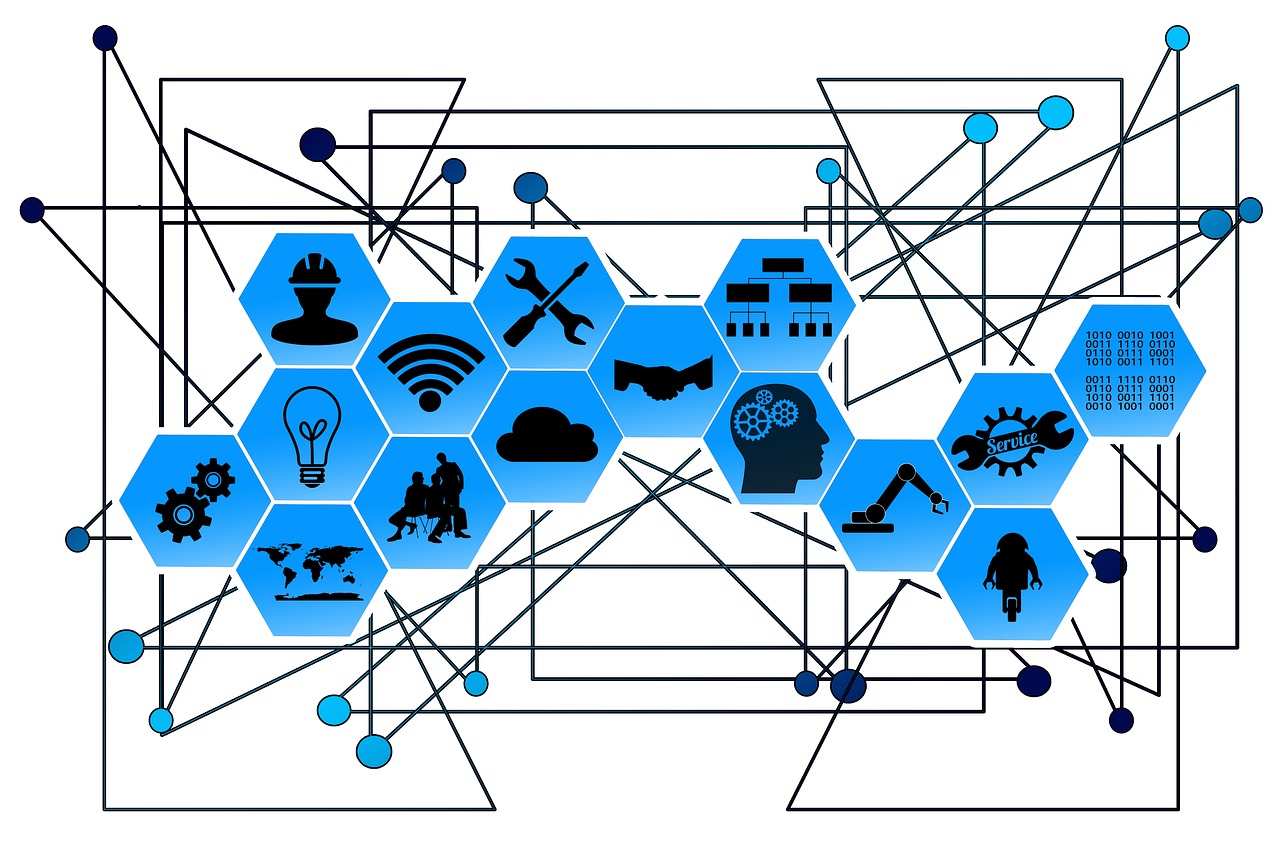
Blockchain Technology
Blockchain technology is revolutionizing the way we perceive peer-to-peer trading. At its core, blockchain is a decentralized digital ledger that records transactions across many computers in such a way that the registered transactions cannot be altered retroactively. This feature not only enhances transparency but also provides a high level of security, making it a game-changer in the world of direct exchanges. Imagine a world where every transaction you make is securely recorded and verified without the need for a middleman—this is the promise of blockchain technology.
One of the most significant advantages of using blockchain in peer-to-peer trading is its ability to reduce fraud. In traditional trading environments, buyers and sellers often have to rely on trust, which can lead to disputes and potential losses. However, with blockchain, every transaction is logged in an immutable ledger, which means that once a transaction is confirmed, it cannot be changed or deleted. This builds a sense of trust among users, as they can verify the authenticity of transactions without having to rely on third parties.
Moreover, blockchain facilitates faster transactions. Traditional trading platforms can have lengthy processing times due to the involvement of banks and other intermediaries. In contrast, blockchain-enabled peer-to-peer platforms can execute transactions almost instantaneously. This speed not only enhances user experience but also opens up new possibilities for real-time trading, which is particularly appealing in volatile markets.
The integration of smart contracts is another exciting aspect of blockchain technology. These self-executing contracts with the terms of the agreement directly written into code can automate various processes in peer-to-peer trading. For instance, a smart contract can automatically transfer ownership of an asset once payment is confirmed, eliminating the need for manual intervention. This not only streamlines operations but also minimizes the risk of human error.
To summarize, the impact of blockchain technology on peer-to-peer trading is profound. It enhances security, increases transaction speed, and automates processes through smart contracts, making trading more efficient and trustworthy. As we move forward, the continued evolution of blockchain will likely play a crucial role in shaping the future landscape of peer-to-peer trading, providing users with even more innovative solutions.
- What is blockchain technology?
Blockchain technology is a decentralized digital ledger that records transactions across many computers, ensuring that the information is secure and cannot be altered.
- How does blockchain enhance security in peer-to-peer trading?
Blockchain provides an immutable record of transactions, which reduces the risk of fraud and increases trust among users.
- What are smart contracts?
Smart contracts are self-executing contracts with the terms written directly into code, allowing for automated processes in trading.
- Can blockchain speed up transactions?
Yes, blockchain can significantly reduce transaction times compared to traditional trading methods, allowing for near-instantaneous exchanges.

Mobile Applications
In today's fast-paced world, have revolutionized the way we engage in peer-to-peer trading. Gone are the days when you had to sit at a desk, navigating complex websites to make a simple transaction. Now, with just a few taps on your smartphone, you can connect with buyers and sellers around the globe. But what makes these mobile apps so pivotal in the realm of peer-to-peer trading?
First and foremost, the convenience factor cannot be overstated. Imagine you’re at a coffee shop, sipping your favorite brew, and you spot a unique item listed on a peer-to-peer platform. With a mobile app, you can instantly send a message to the seller, negotiate the price, and even finalize the transaction—all without leaving your seat. This level of accessibility has made trading not just easier, but also more spontaneous and engaging.
Moreover, mobile applications often come equipped with features that enhance the trading experience. For instance, many apps include:
- Real-time Notifications: Get alerts for new listings or price drops, ensuring you never miss a great deal.
- User Ratings and Reviews: Evaluate sellers or buyers based on past transactions, fostering a sense of trust and security.
- Integrated Payment Systems: Seamlessly complete transactions using various payment methods, from credit cards to digital wallets.
Additionally, mobile applications leverage location-based services to facilitate local trades. This means you can find buyers or sellers in your vicinity, making it easier to arrange meet-ups and inspect items before purchasing. The ability to conduct transactions locally not only saves on shipping costs but also enhances the sense of community among users.
However, as with any technology, there are challenges. Security remains a major concern. Users must ensure that the app they are using has robust security measures in place to protect personal information and transaction details. Many reputable peer-to-peer trading apps employ encryption and two-factor authentication to safeguard their users. It’s essential for users to stay informed about these security features to avoid potential pitfalls.
In conclusion, mobile applications are not just a trend; they are a fundamental component of the peer-to-peer trading ecosystem. They provide unparalleled accessibility, enhanced features, and local trading opportunities that traditional platforms simply cannot match. As technology continues to advance, we can expect these applications to evolve further, making peer-to-peer trading even more integrated into our daily lives.
- What are the key benefits of using mobile apps for peer-to-peer trading? Mobile apps offer convenience, real-time notifications, user ratings, and integrated payment systems, making trading easier and more efficient.
- Are mobile applications safe for peer-to-peer trading? While many reputable apps have strong security measures, users should always ensure the app uses encryption and offers two-factor authentication.
- Can I trade locally using mobile applications? Yes, many mobile apps utilize location-based services to connect you with buyers and sellers in your area.

The Future of Peer-to-Peer Trading
As we look ahead, the landscape of peer-to-peer trading is poised for remarkable transformation. The rapid pace of technological advancements, coupled with shifting consumer preferences, is set to redefine how individuals engage in commerce. Imagine a world where buying and selling are as seamless as sending a text message—this is the potential of peer-to-peer trading.
Experts predict that the growth of peer-to-peer trading will be driven by several key factors. One of the most significant is the increasing reliance on blockchain technology. This innovative technology not only enhances transparency and security but also fosters a sense of trust among users. As more individuals become aware of the benefits of blockchain, we can expect a surge in the adoption of peer-to-peer platforms that utilize this technology.
Moreover, the integration of peer-to-peer trading with traditional markets is on the horizon. Picture a hybrid model where the convenience of direct exchanges meets the stability of established marketplaces. This integration could lead to a more dynamic trading environment, offering consumers the best of both worlds. For instance, traditional retailers might adopt peer-to-peer features, allowing customers to buy directly from each other while still enjoying the brand's trust and reliability.
Another trend to watch is the rise of mobile applications that facilitate peer-to-peer trading. With the proliferation of smartphones, users can engage in transactions anytime and anywhere, creating a more active and vibrant marketplace. These applications not only make trading more accessible but also enhance the user experience through intuitive interfaces and real-time notifications.
| Trend | Description |
|---|---|
| Blockchain Integration | Enhances security and trust in transactions. |
| Hybrid Market Models | Combines peer-to-peer trading with traditional retail. |
| Mobile Accessibility | Allows transactions on-the-go, increasing participation. |
As these trends unfold, it's essential to consider the implications for traditional markets. The rise of peer-to-peer trading could potentially disrupt established business models, compelling traditional retailers to adapt or risk obsolescence. However, this disruption also presents opportunities for innovation, encouraging businesses to rethink how they engage with consumers.
In conclusion, the future of peer-to-peer trading is not just about technology; it's about creating a more inclusive and efficient marketplace. As we embrace these changes, we can anticipate a trading environment that empowers individuals, fosters community, and drives economic growth. So, are you ready to dive into this exciting future?
- What is peer-to-peer trading? Peer-to-peer trading is the direct exchange of goods or services between individuals without intermediaries.
- How does blockchain technology enhance peer-to-peer trading? Blockchain provides an immutable ledger that increases transparency and reduces the risk of fraud.
- What are the main challenges of peer-to-peer trading? Key challenges include regulatory issues, trust concerns, and market volatility.
- Will peer-to-peer trading replace traditional markets? While it may disrupt traditional markets, it is more likely to lead to hybrid models that incorporate both systems.
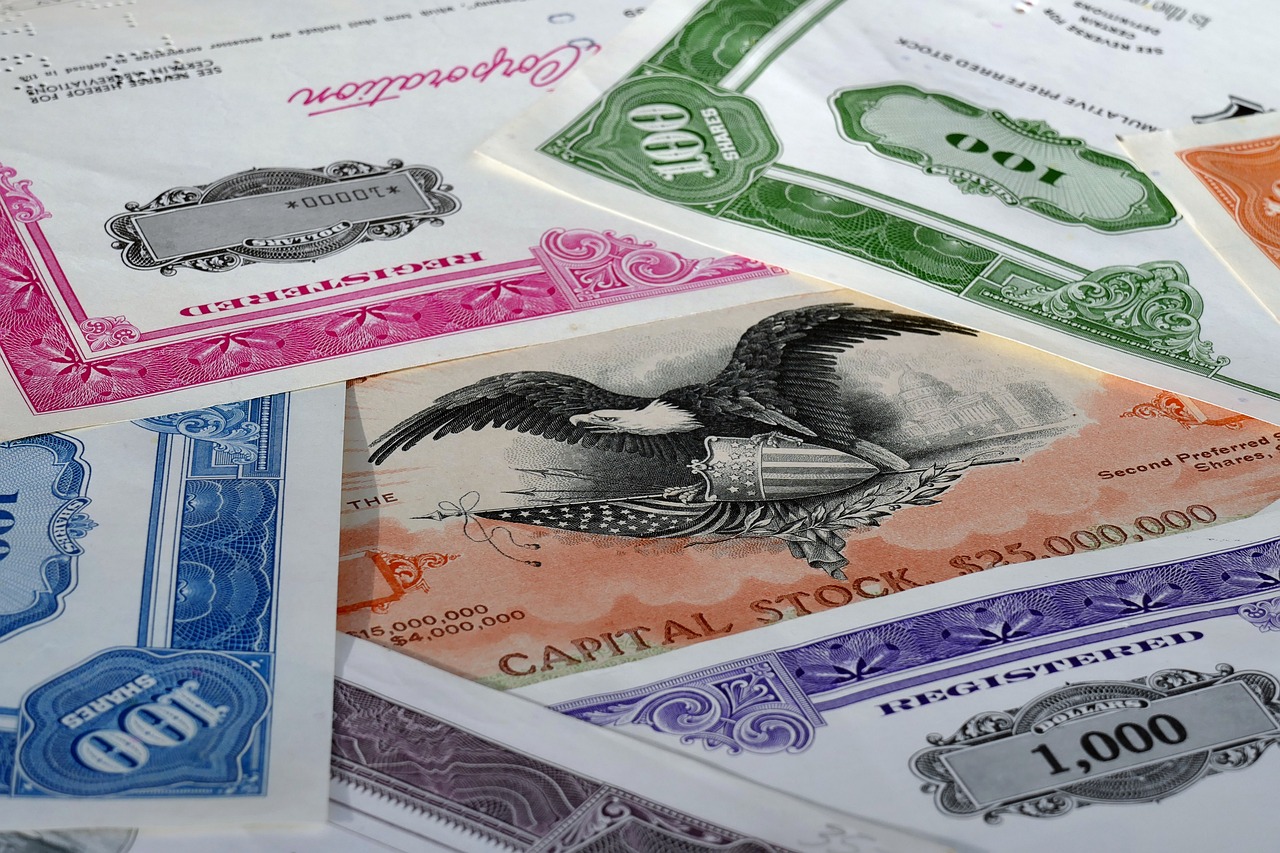
Market Predictions
The landscape of peer-to-peer trading is rapidly evolving, and expert predictions suggest that this market will continue to expand significantly over the next few years. With the increasing adoption of digital technology and the growing desire for direct consumer engagement, analysts are optimistic about the future of peer-to-peer platforms. A variety of factors contribute to these projections, including technological advancements, shifts in consumer behavior, and the increasing need for more flexible and accessible trading options.
One of the key drivers of growth in peer-to-peer trading is the rise of blockchain technology. This innovative technology not only enhances security but also provides a transparent framework that can help mitigate fraud. As more users recognize the benefits of blockchain, it is likely that we will see a surge in the number of platforms utilizing this technology, which in turn will attract more participants to the market.
Additionally, the integration of mobile applications into everyday trading practices cannot be overlooked. With smartphones becoming ubiquitous, users now have the ability to engage in peer-to-peer transactions anytime and anywhere. This convenience is expected to drive higher engagement levels, resulting in increased transaction volumes across various platforms.
According to industry experts, here are some of the anticipated trends in peer-to-peer trading:
- Increased User Adoption: More individuals are expected to embrace peer-to-peer trading as they seek alternatives to traditional marketplaces.
- Regulatory Developments: As governments begin to recognize and respond to the growth of peer-to-peer trading, clearer regulations may emerge, paving the way for safer transactions.
- Hybrid Models: The blending of peer-to-peer trading with traditional market practices could create new opportunities for both consumers and businesses.
Furthermore, the shift in consumer preferences towards more personalized and direct forms of commerce is driving the demand for peer-to-peer trading. Consumers are increasingly valuing transparency and the ability to interact directly with sellers. This trend is likely to continue, leading to a more robust and diverse marketplace.
In conclusion, the future of peer-to-peer trading appears bright, with predictions indicating significant growth driven by technological innovations and changing consumer behaviors. As this market continues to mature, participants can expect to see a more competitive, accessible, and dynamic trading environment that benefits everyone involved.
- What is peer-to-peer trading? Peer-to-peer trading refers to the direct exchange of goods or services between individuals without intermediaries.
- What are the benefits of peer-to-peer trading? Benefits include cost savings, increased market access, and enhanced consumer choice.
- How does technology impact peer-to-peer trading? Technology facilitates seamless transactions, enhances security, and allows for greater accessibility through mobile applications.
- What challenges does peer-to-peer trading face? Challenges include regulatory concerns, trust issues, and market volatility.

Integration with Traditional Markets
As we move into an era where technology and consumer behavior are rapidly evolving, the integration of peer-to-peer trading with traditional markets is becoming increasingly significant. This fusion not only enhances the efficiency of transactions but also creates a more inclusive marketplace that caters to diverse consumer needs. Imagine a bustling marketplace where individuals can trade directly with one another, while still enjoying the reliability and structure of established retail systems. This scenario is becoming a reality as peer-to-peer platforms find their footing alongside traditional marketplaces.
The potential for hybrid models is immense. By combining the strengths of peer-to-peer trading—such as lower costs and increased accessibility—with the trust and stability of traditional markets, we can create a trading environment that benefits everyone involved. For instance, consumers might enjoy the flexibility of negotiating prices directly with sellers while also having the assurance of consumer protection policies that traditional markets provide. This synergy can lead to a more vibrant economic ecosystem where innovation thrives.
One of the most exciting aspects of this integration is the potential for enhanced consumer choice. Traditional markets often have a limited selection due to the need for suppliers to adhere to specific standards and regulations. However, peer-to-peer trading allows individuals to offer unique products and services that may not fit into conventional retail categories. For example, consider local artisans who create handmade goods. In a peer-to-peer framework, these creators can reach consumers directly, bypassing the limitations of traditional retail channels.
Furthermore, the integration of technology is crucial in facilitating this seamless connection. As peer-to-peer platforms adopt advanced technologies like blockchain and mobile applications, they can offer secure and efficient transaction processes that appeal to both consumers and traditional businesses. The result is a marketplace where trust is paramount, and users feel confident in their trading activities.
However, while the prospects are promising, it is essential to address potential challenges that may arise from this integration. Issues such as regulatory compliance, market volatility, and the need for robust security measures must be carefully navigated to ensure sustainable growth. By establishing clear guidelines and fostering collaboration between peer-to-peer platforms and traditional markets, we can pave the way for a future where both systems coexist harmoniously.
In conclusion, the integration of peer-to-peer trading with traditional markets presents a unique opportunity to revolutionize the way we think about commerce. By leveraging the strengths of both systems, we can create a more dynamic, inclusive, and consumer-friendly marketplace. As we look ahead, it is essential to remain open to innovation and collaboration, ensuring that the benefits of this integration are realized for all participants in the economy.
- What is peer-to-peer trading? Peer-to-peer trading refers to the direct exchange of goods or services between individuals without the involvement of intermediaries.
- How does peer-to-peer trading benefit consumers? It offers lower costs, increased market access, and a wider variety of choices for consumers.
- What are the main challenges of peer-to-peer trading? Key challenges include regulatory issues, trust and security concerns, and market volatility.
- How can technology improve peer-to-peer trading? Technologies like blockchain and mobile applications enhance transparency, security, and accessibility in peer-to-peer transactions.
- What does the future hold for peer-to-peer trading? The future may see greater integration with traditional markets, leading to hybrid models that benefit consumers and businesses alike.
Frequently Asked Questions
- What is peer-to-peer trading?
Peer-to-peer trading is a method where individuals directly exchange goods or services without the involvement of traditional intermediaries. It leverages technology to facilitate these transactions, making it a more direct and often more cost-effective approach.
- What are the benefits of peer-to-peer trading?
There are several advantages to peer-to-peer trading, including:
- Cost efficiency due to lower transaction fees.
- Increased market access for individuals who may not have had opportunities before.
- Enhanced consumer choice, allowing buyers to find unique products or services directly from sellers.
- How does peer-to-peer trading save costs?
By removing intermediaries from the process, peer-to-peer trading reduces the fees that are typically associated with traditional marketplaces. This leads to more competitive pricing, allowing buyers and sellers to benefit from better deals.
- What challenges does peer-to-peer trading face?
Despite its many benefits, peer-to-peer trading also encounters challenges such as:
- Regulatory concerns that create legal uncertainties.
- Trust and security issues that can deter users from participating.
- Market volatility that can affect pricing and availability.
- How does technology impact peer-to-peer trading?
Technology is essential in peer-to-peer trading, enabling secure transactions and efficient operations. Innovations like blockchain enhance transparency and security, while mobile applications make trading accessible anytime and anywhere.
- What is the future of peer-to-peer trading?
The future looks promising for peer-to-peer trading, with predictions of continued growth driven by technological advancements and changing consumer preferences. We may also see greater integration with traditional markets, creating hybrid models that benefit both consumers and businesses.






